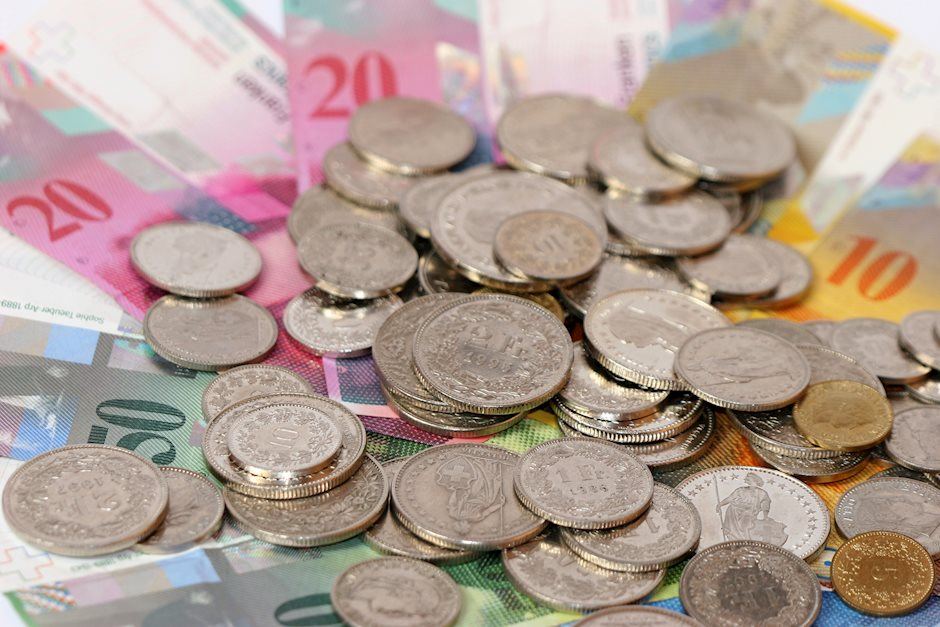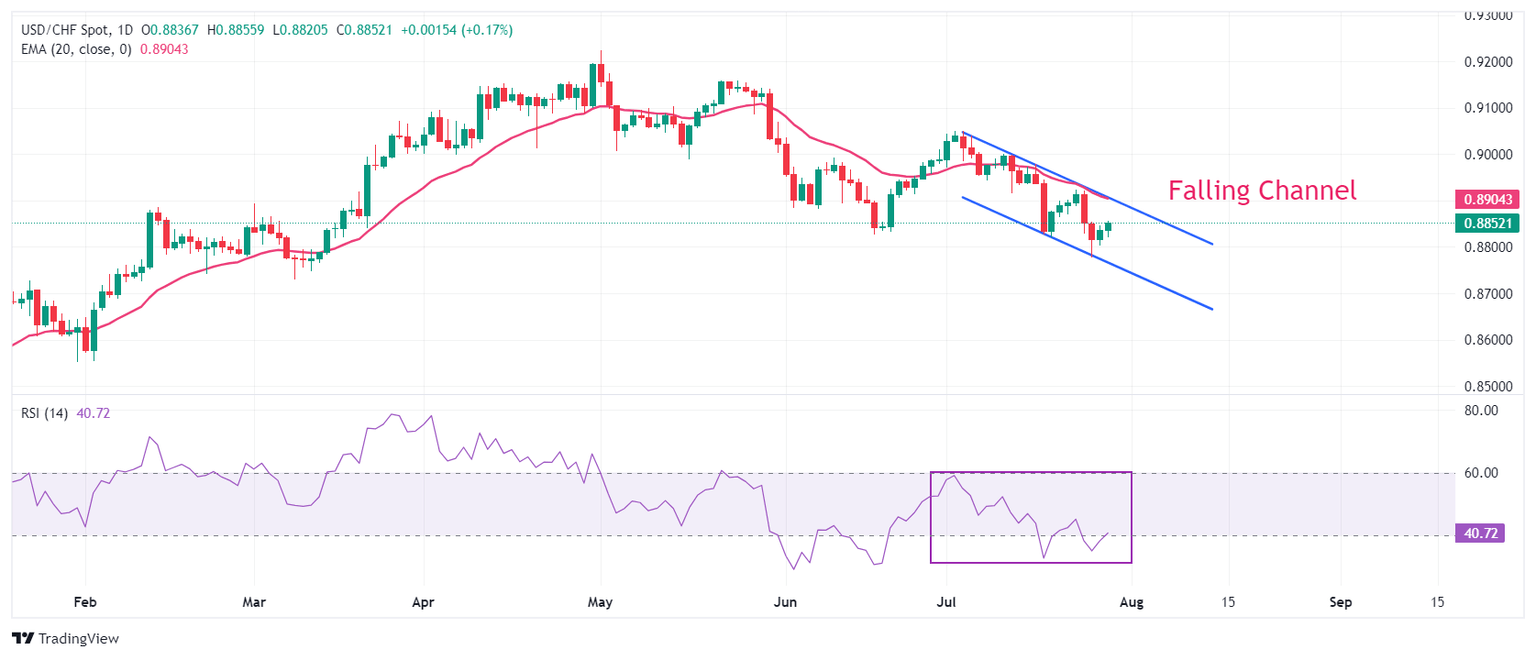USD/CHF Price Analysis: Jumps to near 0.8850 as US Dollar advances
- USD/CHF moves higher to near 0.8850 as the US Dollar posts a fresh two-week high.
- The Fed is expected to begin reducing interest rates in September.
- USD/CHF trades in a Falling Channel chart pattern.

The USD/CHF pair climbs to near 0.8850 in Monday’s New York session. The Swiss Franc asset gains as the US Dollar (USD) rises amid uncertainty ahead of the Federal Reserve’s (Fed) interest rate decision, which will be announced on Wednesday.
The US Dollar Index (DXY), which tracks the Greenback’s value against six major currencies, posts a fresh two-week high around 104.60. The Fed is expected to maintain a status quo for the eighth straight time as inflationary pressures is higher than the desired rate of 2%. While the Fed has made some decent progress in disinflation recently, which will force policymakers to discuss on rate cuts.
Currently, financial markets see the Fed beginning to reduce interest rates from the September meeting and following the trend one more time to November or December.
Meanwhile, the Swiss Franc will be influenced by the Consumer Price Index (CPI) data for July, which will be published later on Friday. The monthly CPI is estimated to have deflated by 0.2% after remaining unchanged in June. This will boost expectations of more rate cuts by the Swiss National Bank (SNB).
USD/CHF bounces back strongly from the lower boundary of the Falling Channel formation, on a daily timeframe, in which each pullback move is considered as selling opportunity by market participants. The 20-day Exponential Moving Average (EMA) near 0.8900 continues to act as major barricade for the US Dollar bulls.
The 14-period Relative Strength Index (RSI) attempts to return inside the 40.00-60.00 range. A bearish momentum would come to an end if the RSI manages to do the same. However, the overall trend will continue to remain bearish.
Going forward, a decisive break above the round-level resistance of 0.8900 will unlock the upside towards July 17 high at 0.8945, followed by the psychological resistance of 0.9000.
In an alternate scenario, a downside move below July 25 low at 0.8777 would expose the asset to March 8 low near 0.8730 and the round-level support of 0.8700.
USD/CHF daily chart
Swiss Franc FAQs
The Swiss Franc (CHF) is Switzerland’s official currency. It is among the top ten most traded currencies globally, reaching volumes that well exceed the size of the Swiss economy. Its value is determined by the broad market sentiment, the country’s economic health or action taken by the Swiss National Bank (SNB), among other factors. Between 2011 and 2015, the Swiss Franc was pegged to the Euro (EUR). The peg was abruptly removed, resulting in a more than 20% increase in the Franc’s value, causing a turmoil in markets. Even though the peg isn’t in force anymore, CHF fortunes tend to be highly correlated with the Euro ones due to the high dependency of the Swiss economy on the neighboring Eurozone.
The Swiss Franc (CHF) is considered a safe-haven asset, or a currency that investors tend to buy in times of market stress. This is due to the perceived status of Switzerland in the world: a stable economy, a strong export sector, big central bank reserves or a longstanding political stance towards neutrality in global conflicts make the country’s currency a good choice for investors fleeing from risks. Turbulent times are likely to strengthen CHF value against other currencies that are seen as more risky to invest in.
The Swiss National Bank (SNB) meets four times a year – once every quarter, less than other major central banks – to decide on monetary policy. The bank aims for an annual inflation rate of less than 2%. When inflation is above target or forecasted to be above target in the foreseeable future, the bank will attempt to tame price growth by raising its policy rate. Higher interest rates are generally positive for the Swiss Franc (CHF) as they lead to higher yields, making the country a more attractive place for investors. On the contrary, lower interest rates tend to weaken CHF.
Macroeconomic data releases in Switzerland are key to assessing the state of the economy and can impact the Swiss Franc’s (CHF) valuation. The Swiss economy is broadly stable, but any sudden change in economic growth, inflation, current account or the central bank’s currency reserves have the potential to trigger moves in CHF. Generally, high economic growth, low unemployment and high confidence are good for CHF. Conversely, if economic data points to weakening momentum, CHF is likely to depreciate.
As a small and open economy, Switzerland is heavily dependent on the health of the neighboring Eurozone economies. The broader European Union is Switzerland’s main economic partner and a key political ally, so macroeconomic and monetary policy stability in the Eurozone is essential for Switzerland and, thus, for the Swiss Franc (CHF). With such dependency, some models suggest that the correlation between the fortunes of the Euro (EUR) and the CHF is more than 90%, or close to perfect.
Author

Sagar Dua
FXStreet
Sagar Dua is associated with the financial markets from his college days. Along with pursuing post-graduation in Commerce in 2014, he started his markets training with chart analysis.


















